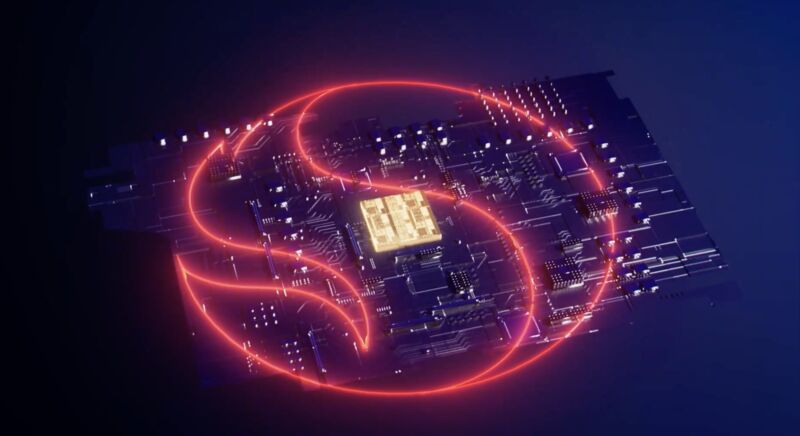
Qualcomm
Qualcomm’s annual “Snapdragon Summit” is coming up later this month, and the company appears ready to share more about its long-planned next-generation Arm processor for PCs. The company hasn’t shared many specifics yet, but yesterday we finally got a name: “Snapdragon X,” which is coming in 2024, and it may finally do for Arm-powered Windows PCs what Apple Silicon chips did for Macs a few years ago (though it’s coming a bit later than Qualcomm had initially hoped).
Qualcomm has been making chips for PCs for years, most recently the Snapdragon 8cx Gen 3 (you might also know it as the Microsoft SQ3, which is what the chip is called in Surface devices). But those chips have never quite been fast enough to challenge Intel’s Core or AMD’s Ryzen CPUs in mainstream laptops. Any performance deficit is especially noticeable because many people will run at least a few apps designed for the x86 version of Windows, code that needs to be translated on the fly for Arm processors.
So why will Snapdragon X be any different? It’s because these will be the first chips born of Qualcomm’s acquisition of Nuvia in 2021. Nuvia was founded and staffed by quite a few key personnel from Apple’s chipmaking operation, the team that had already upended a small corner of the x86 PC market by designing the Apple M1 and its offshoots. Apple had sued Nuvia co-founder and current Qualcomm engineering SVP Gerard Williams for poaching Apple employees, though the company dropped the suit without comment earlier this year.
The most significant change from current Qualcomm chips will be a CPU architecture called Oryon, Qualcomm’s first fully custom Arm CPU design since the original Kryo cores back in 2015. All subsequent versions of Kryo, from 2016 to now, have been tweaked versions of off-the-shelf Arm Cortex processors rather than fully custom designs. As we’ve seen in the M1 and M2, using a custom design with the same Arm instruction set gives chip designers the opportunity to boost performance for everyday workloads while still maintaining impressive power usage and battery life.
Aside from Oryon, the Snapdragon X seems like a straightforward upgrade to the 8cx Gen 3. It will also include GPU cores and an AI-accelerating neural processing unit (NPU), and it’s very likely that it will continue to include a 5G modem that capitalizes on Qualcomm’s dominance in cellular connectivity—even deep-pocketed companies like Apple haven’t been able to get away from using Qualcomm’s modems in their phones.
Even if Qualcomm delivers an Arm chip that’s significantly faster and more power-efficient than its current offerings, there are still software hurdles to overcome. Some Windows apps and almost all Windows drivers written for x86 PCs still won’t work in the Arm version of the software, and as of our testing about a year ago, apps that did offer native Arm versions would still sometimes download and install the x86 versions of those apps by default. The experience still isn’t quite as seamless as the transition from Intel to Apple Silicon Macs was, though Apple had already deprecated many old types of drivers and 32-bit app support a while before it began its transition to Arm chips.
Aside from the dropped Apple lawsuit, Arm (the company) has also sued Qualcomm over the Nuvia acquisition, alleging that Nuvia broke its licensing agreements with Arm when it was sold to Qualcomm and that all chips developed under the Nuvia licensing terms need to be thrown out.
“Nuvia’s licensing fees and royalty rates reflected the anticipated scope and nature of Nuvia’s use of the Arm architecture,” the suit says. In other words, they were negotiated based on Nuvia’s then-stated focus on server CPUs, rather than high-volume processors for consumer PCs.








